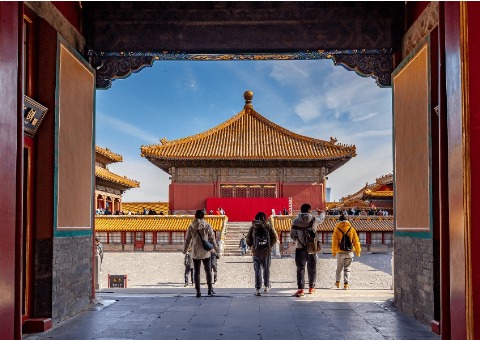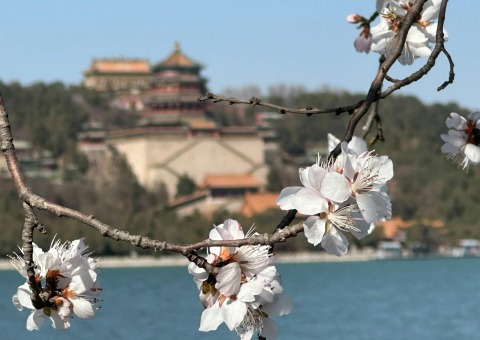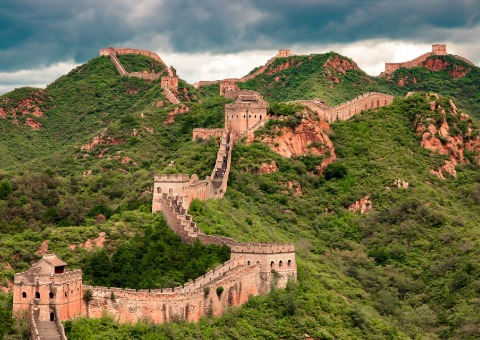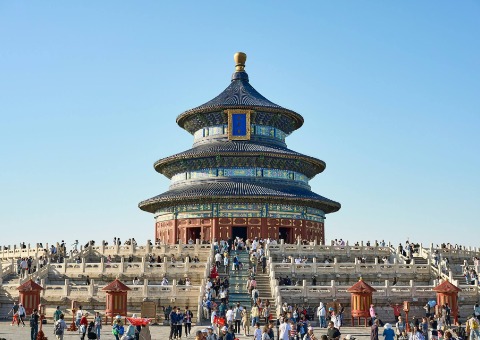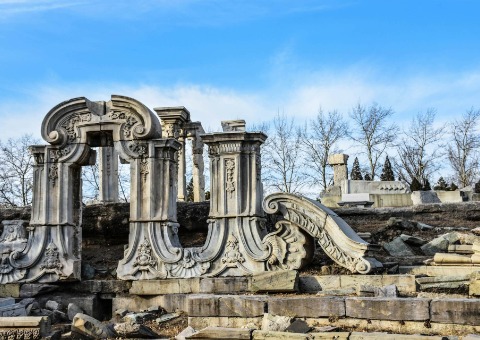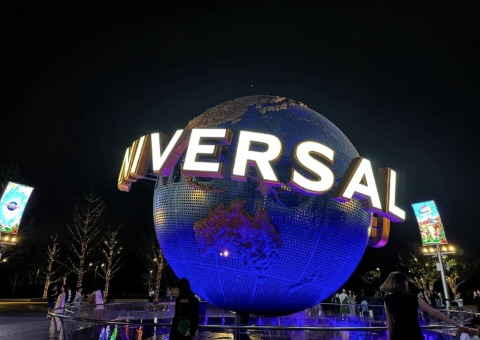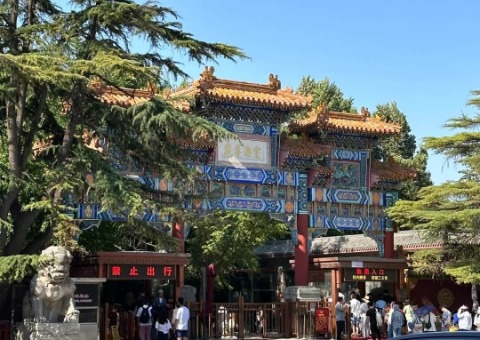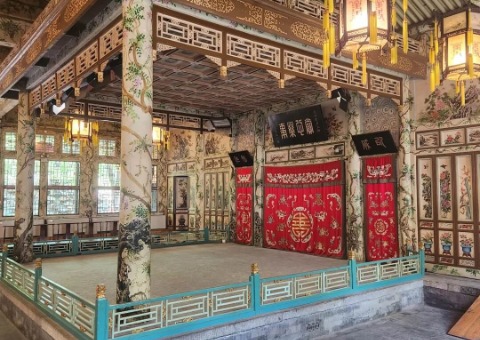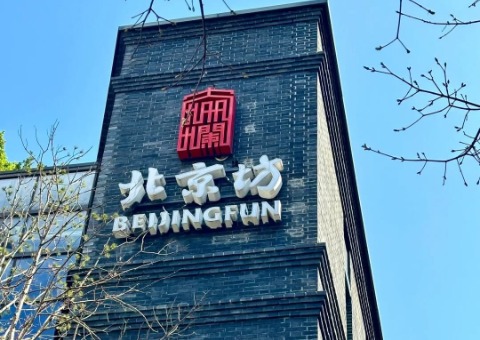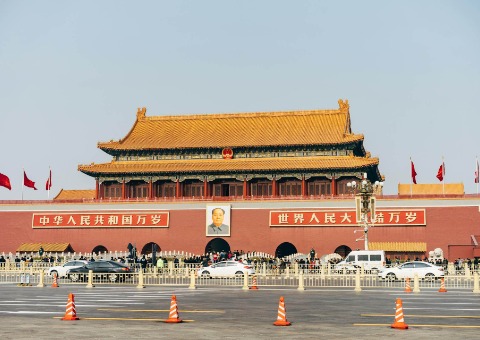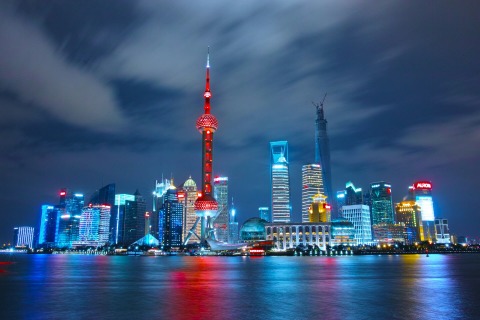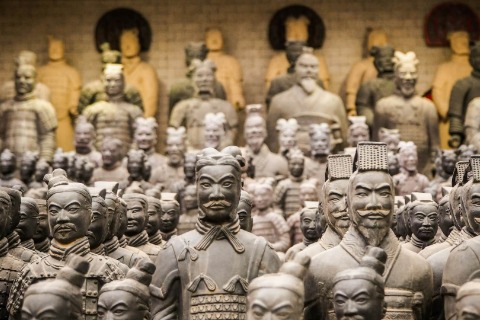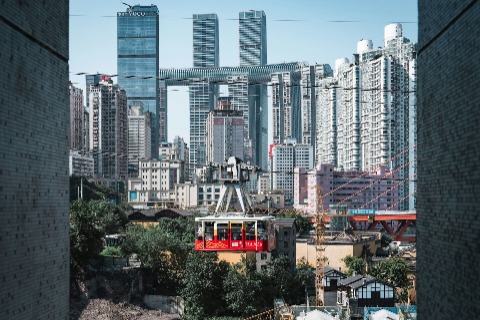Forbidden City
The place where 24 emperors in Chinese history wielded their power.
The Beijing Forbidden City (北京故宫) holds several titles, including being China’s most outstanding ancient architectural complex, the largest imperial palace in the world, the most visited museum globally, and the building with the most rooms in the world.
Often regarded as the foremost of the world’s top five palaces (which also include the Palace of Versailles in France, Buckingham Palace in the UK, the White House in the USA, and the Kremlin in Russia), the Forbidden City, known as China’s imperial palace, was designated a UNESCO World Heritage site in 1987.
As we stepped through the gate of the Imperial Palace, my friend and I couldn't help but exclaim, "Wow! It’s so huge!" Our first stop was the architectural model of the palace. I learned that the Forbidden City covers 723,600 square meters and has around 9,000 rooms. A volunteer guide nearby told me that if a newborn baby were to live in a different room each day, by the time they had stayed in all the rooms, they would be 27 years old!
Tourist Diary 1



Table of Contents
Highlights
Meridian Gate (Chinese name: 午门)
The Meridian Gate, or Wumen, is the main entrance to the Forbidden City, located at the southern end of its north-south axis. Historically, it has played a significant role. During major wars, the gate was the site where victorious armies would present captured prisoners to the emperor in a ceremony known as the ‘Presentation of Captives.’ It was also where the Ming emperors administered punishments to officials with the ‘Court Sticks.’ As the grandest and most important entrance, the Meridian Gate stands as a vigilant guardian, overseeing everyone who enters China’s royal palace.

Hall of Lofty Literary Glory (文华殿)
The Hall of Lofty Literary Glory is the largest library within the Forbidden City. During the Ming and Qing dynasties, it played a significant role, serving as the residence for the Crown Prince, a place for the emperor’s cultural studies, and a venue for the “Jingyan” ceremonies. Each spring and autumn, the Ming and Qing emperors would write imperial essays and discuss insights on the “Four Books and Five Classics” here. Additionally, the Hall of Lofty Literary Glory was used for reviewing the palace examination papers during both dynasties.

Hall of Supreme Harmony (太和殿)
The Hall of Supreme Harmony is not only the largest and most prestigious building within the Emperor’s Palace but also a key site for visitors to explore its rich history and cultural significance. This hall was the main venue for important imperial ceremonies, including emperors’ enthronements, weddings, and sacrifices, making it a central political hub during the late feudal era in China. Visitors can marvel at its grand architectural style and exquisite interior decorations. The vast square in front of the Hall of Supreme Harmony can accommodate tens of thousands of people.

Hall of Central Harmony (中和殿)
The Hall of Central Harmony is situated between the Hall of Supreme Harmony and the Hall of Preserving Harmony. In ancient times, before major ceremonies, the emperor would first receive important officials and ministers here for a formal audience before proceeding to the Hall of Supreme Harmony for the main event. Additionally, the Hall of Central Harmony was used during the Qing Dynasty as a banquet hall for entertaining foreign princes and high officials, highlighting the emperor’s graciousness. Each spring, during the sacrificial ceremonies at the Temple of Agriculture, as well as similar events at the Temple of Heaven, the Altar of Earth, the Altar of the State, and the Imperial Ancestral Temple, the emperor would also read the ritual texts prepared by his ministers in this hall.

Many people love the Forbidden City in spring, when the flowering crabapple, magnolia, and apricot blossoms are in full bloom and the trees burst forth with fresh green buds. Everything feels so vibrant. Others prefer visiting in winter, especially after a precious snowfall, when young men and women don Ming and Qing dynasty outfits to take photos.
But autumn in the Forbidden Palace is also stunning, with the sky a clear, deep blue. A stretch of red walls, a building, a tree with golden leaves, and pomegranate trees heavy with fruit all make for beautiful backdrops. In recent years, the palace has also focused on cultural creations, like cute ice pops shaped like mythical beasts, which are really popular with young people.Tourist Diary 2
Hall of Preserving Harmony (保和殿)
The Hall of Preserving Harmony served different purposes during the Ming and Qing Dynasties. In the Ming Dynasty, it was primarily used by the emperor to change attire before major ceremonies. During the Qing Dynasty, it became a venue for various important events, including annual New Year’s Eve and Lantern Festival banquets for ethnic princes and officials, as well as the imperial examinations known as the “Palace Examinations.” Additionally, the Qing Emperor Shunzhi once resided here and held his wedding ceremony in this hall.

Palace of Compassion and Tranquility (慈宁宫)
The Palace of Compassion and Tranquility was originally built for the Empress Dowager of the last dynasty. It later became the main home for the Empress Dowager. During the Ming Dynasty, important figures like Empress Dowager Ci Sheng and Empress Zheng of Emperor Wanli lived here. Now, the main hall has turned into a big exhibition space called the “Sculpture Gallery.” It features a huge collection of sculptures, including famous pieces like the Northern Qi stone Buddha statues, Terracotta Warriors from the Qin Dynasty, and Eastern Han dynasty mural bricks.

Palace of Heavenly Purity (乾清宫)
The Palace of Heavenly Purity was not only the emperor’s bedroom but also the site of important ceremonies and family banquets, making it a notable historic site in Beijing. During the Qing Dynasty, the emperor used this palace for reading and studying, summoning officials, and meeting with foreign envoys. Inside, the throne is adorned with a plaque reading “Virtue and Integrity,” reflecting the emperor’s commitment to just and honorable governance.

Palace of Earthly Tranquility (坤宁宫)
During the Ming Dynasty, the Palace of Earthly Tranquility served as the queen’s residence. In the Qing Dynasty, it was repurposed for Shamanistic ceremonies and was used for the grand wedding ceremonies of Emperors Kangxi, Tongzhi, and Guangxu. It was also the venue for the last emperor, Puyi’s wedding. The palace features exquisite murals that showcase the painting styles of the Ming and Qing Dynasties, holding both artistic value and historical significance.

Imperial Garden (御花园)
The Imperial Garden is a palace garden rich in classical beauty and historical charm, located at the northernmost end of the central axis of the Forbidden City. It served as a place for emperors and their consorts to relax and enjoy during the Ming and Qing Dynasties. Covering an area of 12,015 square meters, the garden’s design reflects the traditional Han Chinese concept of harmony between heaven and humanity. The Royal Garden features ancient cypress and locust trees, exotic flowers and plants, as well as an array of pavilions, terraces, and stone pathways. This creates a serene yet grand atmosphere. There are over 160 ancient trees scattered throughout the garden.

Gate of Divine Prowess (神武门)
The Gate of Divine Prowess is the northern entrance of the Forbidden City. It has witnessed many significant historical events, including in 1644 when Li Zicheng’s rebel forces stormed Beijing, making it a notable historical landmark. Emperor Chongzhen, Zhu Youjian, fled through this gate and ultimately committed suicide at Coal Hill (now Jingshan). In 1924, when the last emperor, Puyi, was expelled from the palace, he also left through this gate.


How to Get to the Forbidden City
By Bus
- Around the Meridian Gate, public transportation stops include East Tiananmen and West Tiananmen, with buses 1, 120, 2, 52, 82, Night 1, Sightseeing Line 1, and Sightseeing Line 2.
- Around Shenwu Gate, public transportation stops include Shenwu Gate and East Jingshan, with trolleybuses 101, 103, 109, and 124, as well as buses 58, Night 13, Sightseeing Line 1, and Sightseeing Line 2.
- Around Donghuamen, public transportation stops include Donghuamen and East Gate of the Forbidden City, with buses 2, 82, Night 2, and Sightseeing Line 2.
By Subway
- The most convenient route is to take Line 1 of the subway and get off at either the “East Tiananmen(天安门东站)” or “West Tiananmen(天安门西站)” station. After exiting from these stations, passengers can follow the signs and walk approximately 10-15 minutes to reach the Meridian Gate entrance of the Forbidden City.
- There are also other subway stations near the Forbidden City, such as “Dengshikou(灯市口站)” on Line 5 and “Jinyuhutong(金鱼胡同站)” on Line 8. You can walk to the Forbidden City from these stations as well, but they are a bit farther away and will require more walking time.

Whenever I’m in Beijing, the Forbidden City is always packed. But it’s big enough to find a quiet spot to relax and soak in the vibes of this ancient palace. I wouldn’t recommend the Clock Museum unless you’re really into that stuff—it can get pretty boring. If you’re lucky, you might spot a little cat, one of the palace's furry residents. Be sure to take a photo; it’s a special moment!
Tourist Diary 3
Attraction Information
Hours
- April – October: 08:30 – 17:00 (last entry at 4:00 PM)
- November – March: 08:30 – 16:30 (last entry at 3:30 PM)
- The Forbidden City is closed every Monday, except for public holidays in China.
Admission
- Tourist Peak Season (April – October): 60 CNY ( ≈ 8.50 USD)
- Tourist Off-Season (November – March): 40 CNY ( ≈ 5.70 USD)
Prohibited Items
- Commercial photography and videography equipment are not allowed, including items like sliders, jibs, reflectors, floor tripods, and stabilizers.
- Carrying paints and similar substances is prohibited, such as ink, watercolor pens, crayons, markers, stamps, and spray paint.
- Luggage, cat toys, fishing rods, fishing nets, selfie sticks over 1.3 meters, and musical instruments cannot be brought in.
- Kites, balloons, and “low, slow, small” drones and aerial devices are also not permitted.
- Pets are not allowed, except for certified service dogs.
Visitor Services
- At the entrance of the Forbidden City, visitors can rent an audio guide for 40 yuan (approximately $5.60), but a deposit of 100 yuan (approximately $14) is required. The deposit can be refunded once the audio guide is returned.
luggage Storage
- The Forbidden City offers free luggage storage services. Visitors can store their bags at the entrance of the Meridian Gate, and a shuttle will transport the luggage to the exit. Guests only need to inform the staff whether they want their bags sent to the Shenwu Gate or Donghuamen, and the staff will arrange the appropriate transport.
- The storage and pickup times at the Forbidden City vary by season. During peak season, storage is available from 08:30 to 16:00, and pickup is from 09:30 to 17:10. In the off-season, storage hours are from 08:30 to 15:30, with pickup from 09:30 to 16:40.

Practical Travel Tips
- The Forbidden City has four gates, but only the Meridian Gate is the entrance, so everyone has to enter there.
- Route 1: 8-Hour Route: Wenhual Hall → Central Axis → Palace of Compassion and Tranquility → East Six Palaces → Imperial Garden → West Six Palaces → Clock Gallery → Treasure Gallery.
Route 2: 3-4 Hour Route: Central Axis → East Six Palaces (Yingxi Palace, Jingren Palace) → Treasure Gallery. - If you’re visiting in summer, wear comfy shoes and bring a sun umbrella, sunglasses, and a hat to stay cool.
- If you have extra time after exiting through the Shenwu Gate, check out Jingshan Park for a great view of the Forbidden City. The whole of Beijing from there is amazing! No reservation needed; just grab your tickets on-site.
Attraction Surprises
Forbidden City cultural refrigerator magnet (故宫文创冰箱贴)
Inside the Forbidden City, you’ll find lots of cultural and creative shops selling fridge magnets shaped like different iconic buildings of the palace. Prices range from 20 to 100 yuan (about $2.80 to $14).

Forbidden City cultural ice cream (故宫文创雪糕)
In the summer, the Forbidden City can get really hot, so visitors love grabbing cute ice creams that have traditional Chinese designs. They’re not just tasty but also great for photos! You can find these ice creams in other seasons, too.

Forbidden City stamp collection (故宫盖章)
One of the fun things about visiting the Forbidden City is collecting stamps at the iconic buildings. You can bring a blank notebook or buy one there, then just ask the staff at each landmark to stamp it with the matching design.

How Visitors Rate the Forbidden City
International tourists
Local tourists from China
We lined up around 9 AM and got in by 9:30. There are different entrances: some for bag checks, some without, and team entrances, plus a special fast lane that’s the quickest. The Treasure Gallery and the Clock Gallery are separate areas that require additional tickets to enter.
I didn’t see any free drinking water stations. Ice cream from the cultural shop is 25 yuan (about $3.70), and a 30-gram (about 1.1 ounces) piece of bread costs 10 yuan (about $1.50), while a 120-gram (about 4.2 ounces) cranberry pastry is 39 yuan (about $5.80). If you get tired, there are plenty of benches to rest on. I recommend renting an audio guide to enhance your experience—there are quite a few international visitors as well!
The Forbidden City was the royal palace during the Ming and Qing dynasties, and it’s so impressive. The wood carvings, jade work, and stone sculptures show off the skills of ancient artisans. I was in awe!
The whole place feels luxurious and majestic. With over 70 palaces, each one has its own charm. It’s a real treasure of Chinese culture and a world heritage site. The Treasure Gallery and the Clock Gallery are filled with rare and stunning items that really expand your view.
This place embodies the profound richness of Chinese cultural history and is not only a cultural hub but also a source of pride for all of us. Of course, many young people come here to take photos, often in traditional costumes. With the bright blue sky and the stunning ancient architecture, the scenery is simply beautiful.
The guided services are top-notch too; the staff is friendly and professional, sharing valuable insights. Overall, the Beijing Palace Museum is a must-visit spot. It’s perfect for anyone into history and culture, as well as those who appreciate architecture and art. There’s something here for everyone to enjoy!

